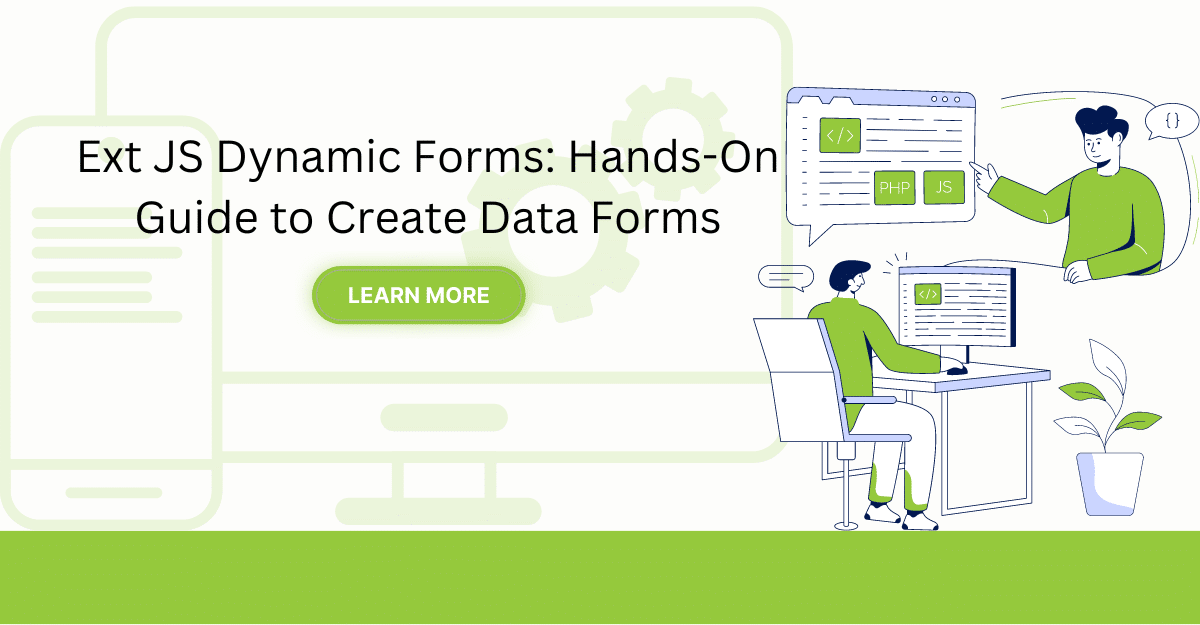10 Signs You Work With The Best JS Framework
Nowadays, most web developers prefer to use frameworks for their developments as they provide a more reliable and efficient way to build modern JavaScript-based web applications. This is only true, however, if you can find the most suitable, user-friendly framework before you begin. Sencha Ext JS is one of the best JS frameworks on the market. In this post, let’s discuss ten signs of a good JS framework.
Is It Easy to Set Up and Use?
The framework you select should be easy to set up and use. Another essential factor is that the framework should be cross-platform compatible. This is because you have to share your code across multiple devices and with developers who use different operating systems. Furthermore, if the framework has documentation, it is easier for developers when they struggle with something or need to learn about new features. Sencha Ext JS is easy to set up and use. This framework is appropriate for JavaScript-based development as it supports numerous popular libraries such as Angular, React, and Next.js.
Does Your JS Framework Auto-Generate Code?
Whatever the JS library you use, you have to implement different components using HTML5. In this situation, developers have to put effort into constructing HTML forms, components such as login, registration, dashboards, and contact pages. Auto-generating that code instead of coding manually saves time in the development phase and reduces human errors. Sencha provides that feature for busy developers. As the best JS framework, Sencha comes with a visual app builder called Sencha Architect. It lets you generate excellent user interfaces by dragging and dropping different UI components.
How do I Debug the JS Code?
Developers have to put considerable effort into debugging during the development and maintenance phases of SDLC. This is because you have to analyze your code step by step when you discover an issue. That process is much faster if the JS framework you use supports debugging. Sencha Inspector provides debugging and troubleshooting features in the ExtJS framework. It provides smart debugging features, such as direct access to classes, objects, and components. As a result, you can analyze your JS code for issues and identify problems such as over-nesting components. You can also determine the number of layouts required to operate the JS app optimally. Furthermore, you can use Sencha Inspector to perform unit testing and end-to-end test your apps built using ExtAngular, Angular, and ExtReact on different operating systems and cross-browser platforms.
Can I Share Code Snippets?
You will have to share code snippets with your colleagues and other developers during the implementation of your JavaScript application. Generally, developers use different techniques to share code, like GitHub or GitLab and pair programming. Now you can easily create & share code using Sencha Fiddle, which is an online platform. You don’t have to set up anything locally but it has the look and feels of a local development environment. It also supports all browsers and operating systems. You just log in with your Sencha forum user credentials and share the Fiddle URL to share code snippets.
Can You Use GraphQL with Your JS Framework?
Today most developers use GraphQL to control the data required through an API. GraphQL provides a standard format for your API by presenting schemas through defining object types and fields. Sencha allows you to use GraphQL schema with ExtJS data model, the Apollo client. That client library can be used in ExtJS projects to communicate with GraphQL requests. This means that GraphQL queries depend on a schema shared between sender and receiver to clarify which data is needed. Sencha ExtJS also provides a data package to control UI components, application data, and structure records.
Does Your JS Framework Provide a CMD?
Today, CMD is a must-have tool for every JavaScript-based application. Most project life cycle activities such as library installations, code minification, project configurations, initializations, scaffolding, and production kit generation are done through the cmd. Sencha also provides CMD, the main starting point for ExtJS projects. Sencha Cmd provides complete lifecycle management capabilities by automating numerous life cycle tasks. Moreover, it provides a rich command-line syntax to complete your Sencha projects.
How to Load Data Efficiently?
Many JavaScript developers struggle when loading heavy data sets in UI components. While a network transaction to query data from the database takes only a few seconds, it often takes minutes to render on a frontend grid implemented using React, Angular, or any other JS library. Sometimes you have to create the data table with your components as libraries have certain limitations. It causes performance issues in your application.
You can use the grid provided by Sencha Ext JS for the efficient data manipulation needs of your application. Sencha Grid libraries can process millions of records within seconds and perform data manipulation activities such as sorting, filtering, searching, scrolling, grouping, paginating, importing & exporting data, and pivoting.
Can I Design Beautiful High-End UIs?
Building user interfaces or UI/UX engineering is a significant task during the implementation of your JavaScript application. UIs should have a modern look and feel, compatibility across all platforms and browsers, and attractiveness. You can use Sencha Themer to design gorgeous user interfaces. It allows you to style your Ext JS, ExtAngular, and ExtReact applications, accelerating development. Additionally, Sencha Themer provides a graphical interface to create customized themes. This interface consists of a smart palette to apply different color blends to various component states. You can perform all these things without coding as Themer automatically generates code.
How can I Use the MVC Design Pattern on My JS Application?
Maintaining and adding new features to a well-structured project is very convenient. However, it’s challenging to find the best fit for your project proposal as there are numerous design patterns in the industry. One such industry-standard pattern is MVC which stands for (M – model, V – View, C – Controller). Projects created with Sencha ExtJS follow MVC pattern architecture to create the folder structure. Yet you should have at least a basic understanding of MVC to confront MCV structure. For instance, you should know what the model classes of your domain are? What are the views(UI components should associate)? Where to put the controller logic?
Can You Use Plugins and Mixins with Your JS Framework?
Since Sencha is a library, you will have to use the same functionality in multiple components during the development. In these scenarios, you can extend the class functionality by introducing derived classes. The most effective solution is to establish the functionality as a plugin or mixin. Sencha enables you to define a plugin from Ext.plugin extension. Once you create a plugin, you will receive init(), enable(), disable(), and destruct() methods by default.
Now you have a thorough understanding of the Signs of a good JS Framework, so let’s get started with Sencha – the best JS framework at the moment.

Are you facing issues with Ext JS applications’ performance as they scale up? Don’t worry!…

Dynamic forms are changing the online world these days. ExtJS can help you integrate such…

In modern software development, unit testing has become an essential practice to ensure the quality…



 Rapid Ext JS (beta)
Rapid Ext JS (beta)











